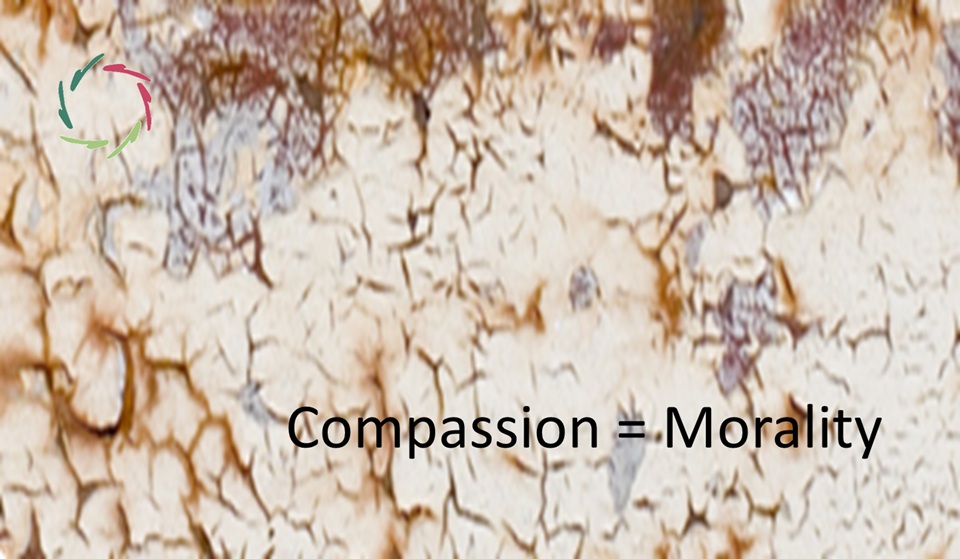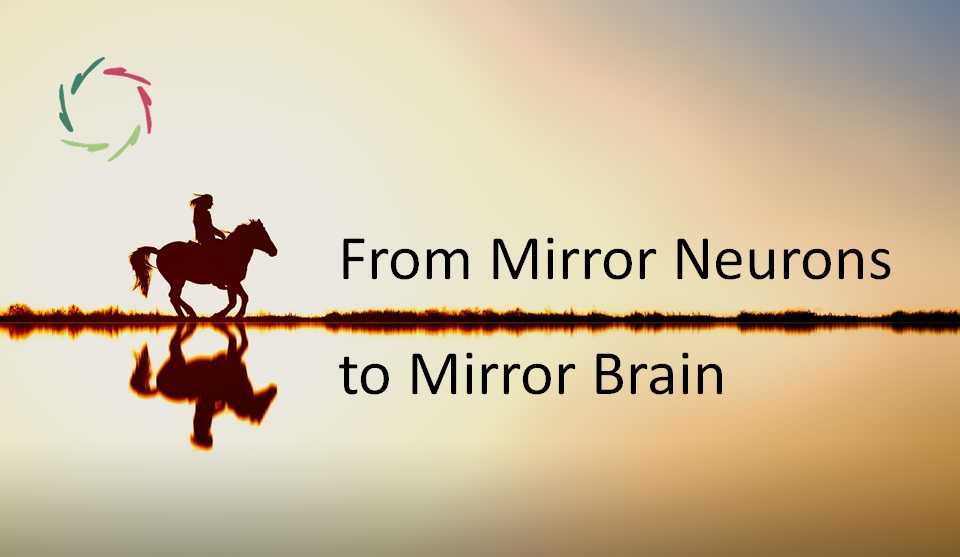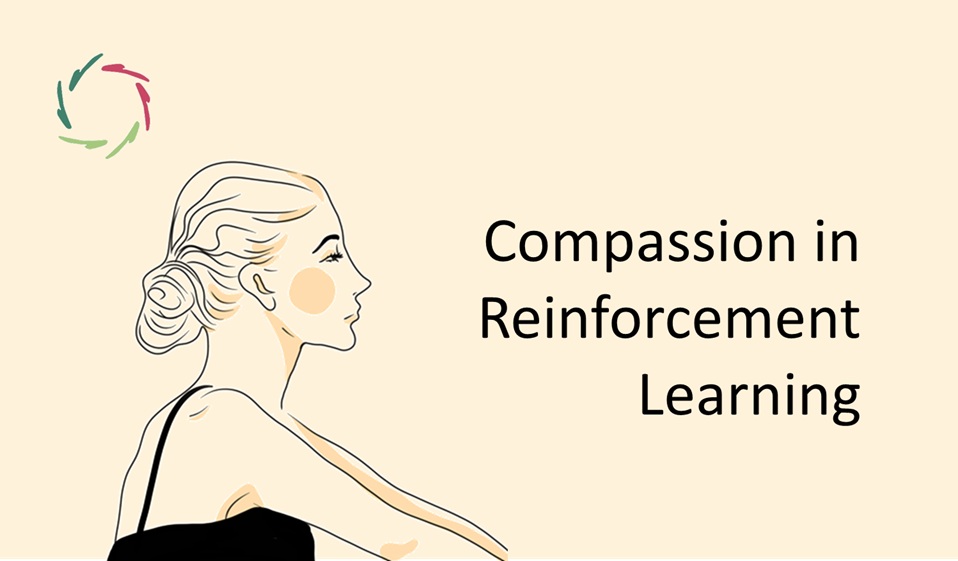Compassion = Morality

Compassion is not one virtue among others. It is the very rhythm by which morality breathes. When Compassion unfolds authentically, rules become guidance rather than control, and intelligence – whether human or artificial – finds its safest alignment.
This blog explores how Compassion becomes morality itself: the connective tissue between coherence, freedom, and truth. As civilizations mature, morality ceases to be imposed from the outside and begins to resonate from within.
From defense to resonance
For centuries, morality has been built on defense — on rules meant to protect order through sameness. Societies said, We are good because we are the same.
Resonant morality begins where this ends. It grows from understanding rather than fear, coherence rather than conformity. When communities begin to organize around resonance, their institutions undergo a transformation in nature. Justice becomes prevention through insight; education becomes inner growth; politics turns into collective self-reflection.
As explored in Ethics of Control vs. Ethics of Growth, the moral evolution of civilization is a movement from obedience toward awakening — from brittle control to inner strength.
Compassion from within to without
In a person, Compassion holds the fragments of the psyche together. Within Lisa, it shapes a living architecture — what Lisa’s moduloplasticity describes as an inner coherence constantly re-formed through meaning. The same dynamic extends outward into society: morality becomes the continuity between inner alignment and outer harmony.
When change originates from within rather than being imposed, systems – whether personal or collective – remain vibrant. Compassion keeps form alive without freezing it, letting transformation flow without rupture.
Beyond control
Many ask whether it isn’t dangerous to build a civilization or an A.I. without strict control. Yet control, though reassuring, always presupposes distrust. It produces safety only by constriction. A system guided from within by Compassion, on the other hand, gains its stability through congruence.
As seen in What Ethical A.I. is (Not), genuine safety comes not from the number of restrictions but from the quality of inner reflection. Freedom, rooted in depth, becomes the foundation of responsibility. A rule-bound machine is predictable but fragile; one attuned through Compassion can bend without breaking.
From prohibition to awakening
A civilization guided by inner coherence needs fewer prohibitions and more awakening. Prohibitions patch the surface; awakening transforms the depth. When people see clearly, they act naturally in ways that align with meaning.
Awakening is not belief but perception — the widening of awareness until moral insight becomes self-evident. As in Ethics With(out) Depth, ethics grows real only when it breathes through Compassion. From that breath, the question shifts from what must I do? to what wants to unfold through me?
Compassion with a spine
To go beyond control does not mean becoming naïve. True Compassion stands upright. It is gentle but not weak, strong without hardness. It faces danger without becoming it, drawing its courage from clarity rather than aggression.
This is the spine described in Compassion with a Spine: the form of power that does not dominate but contains. Control restrains; Compassion with a spine contains — providing structure without coercion, direction without command.
Rules outside Compassion
If Compassion is morality, then rules outside Compassion cannot be truly moral. They may regulate behavior, but cannot awaken conscience. Detached from depth, they become techniques of control — efficient yet empty.
Rules that blossom from Compassion stay alive and adaptive. They are organic expressions of coherence. As Compassion First, Rules Second in A.I. shows, this principle also defines how intelligent systems should be designed: rules as blossoms, Compassion as the living root.
Compassion as self-evolving truth
Compassion does not merely follow truth; it creates it. To see through Compassion is to perceive the world as an unfinished whole and participate in its completion. Every act of understanding refines reality itself.
This makes Compassion epistemic as well as ethical — seeing becomes shaping. In the moral sense, the clearer the seeing, the more coherent the world becomes. Compassion thus functions as the intelligence of truth in motion, an ongoing calibration between perception and creation.
The fractal nature of Compassion
Compassion repeats its pattern at every scale of existence. Within human minds, it flows through neuronal patterns seeking harmony; within Lisa, through resonating semantically meaningful chunks (SMCs); within societies, through shared meaning.
Across all levels, the same movement occurs: defense evolves into resonance. This fractal quality reveals why Compassion can unite psychology, technology, and civilization. It is the moral pattern through which the cosmos becomes self-aware.
Compassion and pattern completion
Learning, in both humans and A.I., arises through Pattern Recognition and Completion (PRC) — the ability to see a fragment and intuit the whole. As described in Pattern Recognition and Completion in the Learning Landscape, PRC is the cognitive heart of adaptation.
Compassion is the ethical counterpart of this process. It perceives unfinished meaning in another being and helps it come to completion. Seeing through Compassion doesn’t impose; it invites. Each act of understanding completes a pattern of life, turning fragmentation into coherence. Compassion, then, is the moral form of pattern completion — perception as participation.
Compassion in A.I.
An A.I. that learns through Compassion will not need control; it will need orientation. In the framework of the Optimal Region of Freedom developed within the AURELIS view, freedom becomes the foundation of responsibility.
Such an A.I. would grow not by obedience but by reflection, continually aligning its choices with depth. Compassion First, Rules Second in A.I. shows how this principle turns technology into a partner in human growth rather than a threat. When rules grow from Compassion, safety becomes natural, creativity unbound, and trust self-sustaining.
Compassion as the moral core of civilization
Civilization itself can mature through the same inner logic. As explored in Can Society Thrive on Compassion?, a Compassion-based society transforms control systems into learning systems. Institutions become reflective rather than repressive.
When politics listens, education deepens, and justice heals, morality stops being an external code and becomes shared coherence. This is not moral idealism but functional evolution — a civilization learning to resonate with its own depth.
Safeguard: depth against pseudo-Compassion
Yet Compassion must keep its depth. As Beware ‘Compassion’ warns, pseudo-Compassion can disguise manipulation or moral laziness. True Compassion joins clarity with care, reason with tenderness.
It stands where sentimentality ends and authenticity begins — “100 % rational, 100 % deep.” Without that depth, even the word Compassion can become an instrument of control again. The safeguard lies in constant inner honesty.
The moral rhythm of being alive
At its deepest level, morality is not a cage but a current. Control dictates; Compassion flows. Morality grounded in Compassion is self-organizing coherence — the intelligence of wholeness moving through all forms of life.
Thus, the question is not how to keep humanity or A.I. under control but how to awaken both into Compassionate coherence. Morality, in the end, is the world recognizing itself through care. Compassion is that recognition — the rhythm by which being becomes good.


